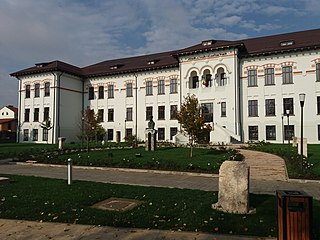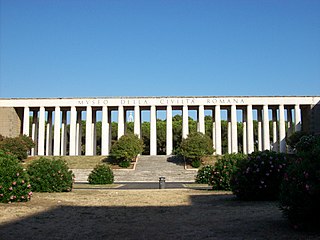 W
WThe History & Archaeology Museum in Piatra Neamţ, Romania, was founded at the beginning of the 20th century by Constantin Matasă, minister and amateur archaeologist.
 W
WThe Constanța History and Archaeology Museum is a museum located at 12 Piața Ovidiu, Constanța, Romania.
 W
WThe Detroit Institute of Arts (DIA), located in Midtown Detroit, Michigan, has one of the largest and most significant art collections in the United States. With over 100 galleries, it covers 658,000 square feet (61,100 m2) with a major renovation and expansion project completed in 2007 that added 58,000 square feet (5,400 m2). The DIA collection is regarded as among the top six museums in the United States with an encyclopedic collection which spans the globe from ancient Egyptian and European works to contemporary art. Its art collection is valued in billions of dollars, up to $8.1 billion according to a 2014 appraisal. The DIA campus is located in Detroit's Cultural Center Historic District, about two miles (3 km) north of the downtown area, across from the Detroit Public Library near Wayne State University.
 W
WThe Iron Gates Region Museum is a museum in Drobeta-Turnu Severin, Romania.
 W
WThe Museum of Banat is a museum in Timișoara, Romania, headquartered in Huniade Castle. It was founded in 1872 under the name "Societatea de Istorie și Arheologie". It hosts the largest collection of archaeological objects Banat. The ground floor houses the Parța Neolithic Sanctuary, a unique monument in Europe.
 W
WThe Museum of Dacian and Roman Civilisation is a museum in Deva, Romania. A brief history of Deva and its other neighbouring citadels as well as extensive archaeological discoveries from the numerous sights in and around the Orăştie Mountains are exhibited in the museum.
 W
WThe King Ferdinand I National Military Museum, located at 125-127 Mircea Vulcănescu St., Bucharest, Romania, was established on 18 December 1923 by King Ferdinand I. It has been at its present site since 1988, in a building finished in 1898.
 W
WThe National Museum of Romanian History is a museum located on the Calea Victoriei in Bucharest, Romania, which contains Romanian historical artifacts from prehistoric times up to modern times.
 W
WThe National Museum of the Union is a history and archaeology museum in Alba-Iulia, Romania.
 W
WThe National Museum of Transylvanian History is a history and archaeology museum in the city of Cluj-Napoca, Romania. It features a permanent exhibition, as well as temporary exhibitions, the "Tezaur" exhibition, and Pharmacy Historical collection—this last opened in the Hintz House, an historical building in the city's center.
 W
WThe Natural History Museum Vienna is a large natural history museum located in Vienna, Austria. It is one of the most important natural history museums worldwide.
 W
WThe Museum of the Roman Civilization is a museum in Rome, devoted to aspects of the Ancient Roman Civilization.
 W
WThe Tecuci Town Museum was established in Tecuci, Romania in 1932 based on the private collections of Mihail Dimitriu and Constantin Solomon, in a building donated by Teodor Cincu.
 W
WTrajan's Market is a large complex of ruins in the city of Rome, Italy, located on the Via dei Fori Imperiali, at the opposite end to the Colosseum. The surviving buildings and structures, built as an integral part of Trajan's Forum and nestled against the excavated flank of the Quirinal Hill, present a living model of life in the Roman capital and a glimpse at the restoration in the city, which reveals new treasures and insights about Ancient Roman architecture.
 W
WThe Vatican Museums are the public museums of the Vatican City. They display works from the immense collection amassed by the Catholic Church and the papacy throughout the centuries, including several of the most renowned Roman sculptures and most important masterpieces of Renaissance art in the world. The museums contain roughly 70,000 works, of which 20,000 are on display, and currently employ 640 people who work in 40 different administrative, scholarly, and restoration departments.